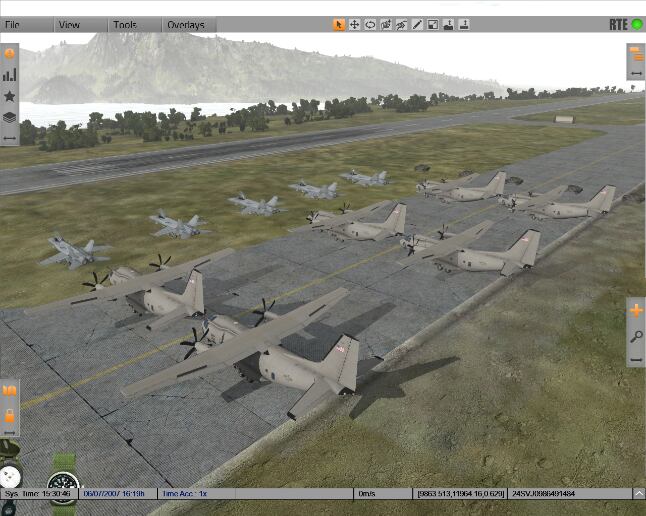Virtual reality technology has been paired up with a decades-old parachute safety trainer to give military freefall specialists a host of mission-planning options for airborne operations.
The Parasim device is a jump harness with suspension systems that hoist the jumper to a horizontal position to begin the jump simulation.
The VR goggles give a 360-degree view of the terrain below, with a potentially endless variety of landscapes and scenarios to practice airborne maneuvers and landing on target.
Once the predetermined altitude has been reached, the user pulls the ripcord and the system “drops” the jumper into a vertical position. Then, it’s just a matter of pulling down the toggles from the risers and then adjusting the position as you descend.

At the annual National Defense Industrial Association Special Operations Forces Industry Conference recently, Parasim business development head Russ Lascink explained more of the features and work being done currently with U.S. Army Special Operations Command parachutists.
So far, he said, the Army has put more than 600 jumpers of varying experience levels through the trainer.
USASOC has mandated at least one Parasim trainer for each Special Forces Group, he said.
Marines, sailors and airmen have used the trainer for both airborne operations and pilot ejection practice.

The trainer has existed as a safety trainer for 20 years, but with the addition of simulation technology by Bohemia Interactive Simulations, the creator of Virtual Battle Space 3 — a warfighting simulator used by the Marine Corps — the device becomes a mission planner, Lascink said.
The aim is to give jumpers gear awareness, emergency procedure practice and confidence in their skills before they exit an aircraft.
“We simulate 14 different malfunctions a jumper could have, and that’s not typically something you’d want to practice in real life,” he said.
And the simulator isn’t limited to terrain changes. They can simulate different wind strengths, day or night conditions, and a variety of jump rig configurations.
They can take a different harness and work the specifications into their computer modeling so that if there’s an equipment change, jumpers can continue training with the new gear.
The simulator also allows for recording, giving jumpers a video playback to see how they can improve their performance.

Todd South has written about crime, courts, government and the military for multiple publications since 2004 and was named a 2014 Pulitzer finalist for a co-written project on witness intimidation. Todd is a Marine veteran of the Iraq War.




